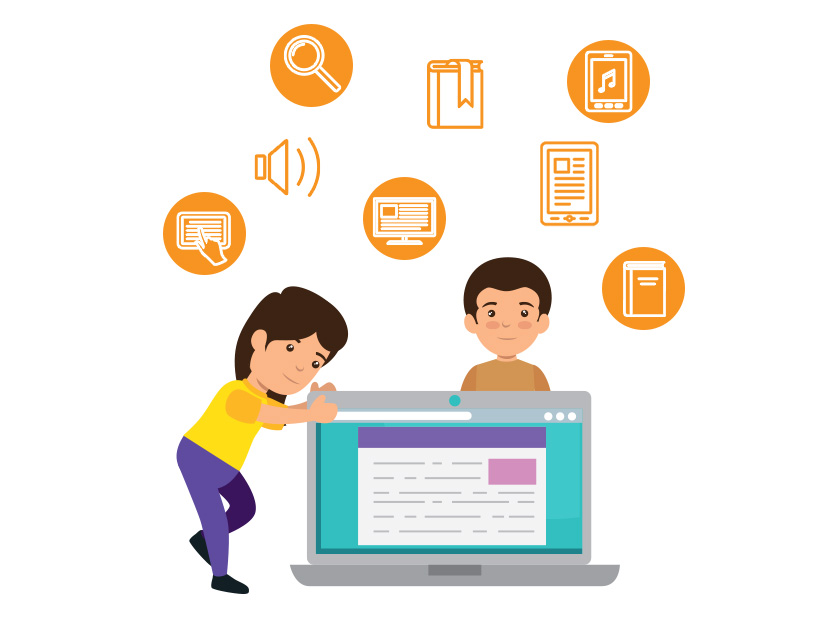Did you know that the first fully developed writing system is believed to have developed in Egypt as early as 3,500 BCE? The system was hieroglyphic, meaning it used pictures to represent certain expressions, sounds or words. We seem to have come a full circle since then, with the use of emojis in our communications!
But for educational purposes, the preferred mode of conveying information has traditionally been text, albeit with some hazy images added in between. But even this is starting to change, with the use of gaming and videos in education. The 21st century has seen technology evolve at a tremendous pace and educational publishing has kept pace. In fact, each year, there are new trends defining the publishing industry.
Here are 4 K-12 publishing trends that will rule in 2020.
1. The Switch to Digital Publishing
Textbook publishing has been on the decline for a long time now. But it became much more evident when educational publishing giant Pearson decided to phase out print textbooks and focus solely on eBooks. In fact, textbook publishing revenues in America declined from $11.7 billion in 2015 to $8.79 billion in 2018.
The advantages of eBooks are countless! But some of the main reasons why publishers are switching to digital publishing are:
Easy Updates
Unlike print, digital content can be easily updated with just a click. This ensures that the content is up to date, without needing to wait for the release of any new editions. This is helpful not only for students, but also for publishers.
Improved Engagement
Digital learning allows the use of interactive and gamification elements, such as puzzles, infographics, videos and audio. These helps in improving engagement and providing information in bite-sized, easy to digest chunks. In fact, studies have found that 67% students find courses with gamification more motivating.
Increased Flexibility
With digital learning, students experience freedom in learning like never before. They can access course material at the time and place most convenient for them. Students can learn anywhere they want to, whether at school, at home, or while traveling. It also removes the need to carry a 12-pound backpack to school everyday!
2. Personalized Learning
When it comes to K-12 publishing, the one-size-fits-all model does not work, and it has been known for a long time to most education experts. With standardized learning, there are always students who fall behind and those who feel the lesson is moving too slowly.
In 2020, the focus on using technology to provide personalized and self-paced learning is expected to increase significantly. With this, students can review a lesson as many times as they need to, on a device of their preference, without feeling judged or pressured to keep pace with their peers. The learning path is also different for each student, based on their individual learning styles and preferences.
Publishers are even allowing students to choose their own resources and create personalized learning materials.
3. Rise of Mobile First Learning
Did you know that there were more than 3.2 billion smartphone users in the world in 2019? In addition, 45% of teens say that they are almost constantly on their smartphones. This has made it necessary for K-12 publishers to offer mobile first digital learning content. Mobile first learning can be made possible with the help of robust publishing platforms like MagicBox™.
Offering content through mobile apps is another emerging trend. Through a white label platform that eases the process of offering custom apps, publishers allow students to browse through various eBooks as well as buy digital content.
4. Growth of Audiobooks
Almost half of all Americans over the age of 12 have listened to an audiobook in the past year, according to a 2019 survey. On top of that, audiobook users tend to be on the younger side. In fact, 55% of the listeners were found to be below the age of 45. The popularity of audiobooks is only expected to rise going forward.
Educational publishers are also expected to take advantage of this trend and include audiobooks or integrate audio elements in their content.
How MagicBox™ Helps
MagicBox™ is a SaaS-based, cloud-hosted, end-to-end digital publishing and next-generation platform that offers rich features and functionalities for content creation, publishing and distribution. The platform also allows easy integration of interactive and gaming elements with just a few clicks. With such a platform, offering personalized learning, assessments and feedback becomes a breeze.
This K-12 learning platform also helps publishers maximize monetization of their content through robust digital rights and licensing management tools. MagicBox™ provides the flexibility to create licenses that are user-based, device-based or domain-based. It also offers seamless integration with other standard LMSes and applications.
Publishers who want to stay ahead of the curve, need to stay updated on the latest K-12 publishing trends. Implementing such trends in their publications becomes easy with a powerful platform like MagicBox™. Contact us to know how.















